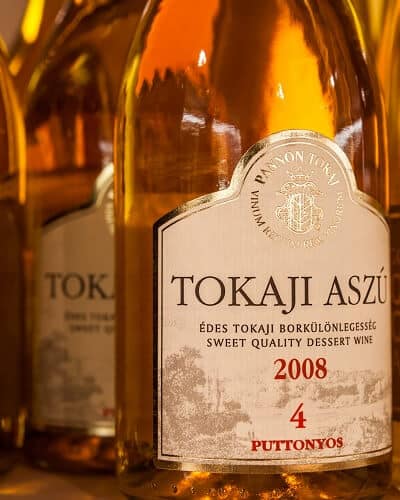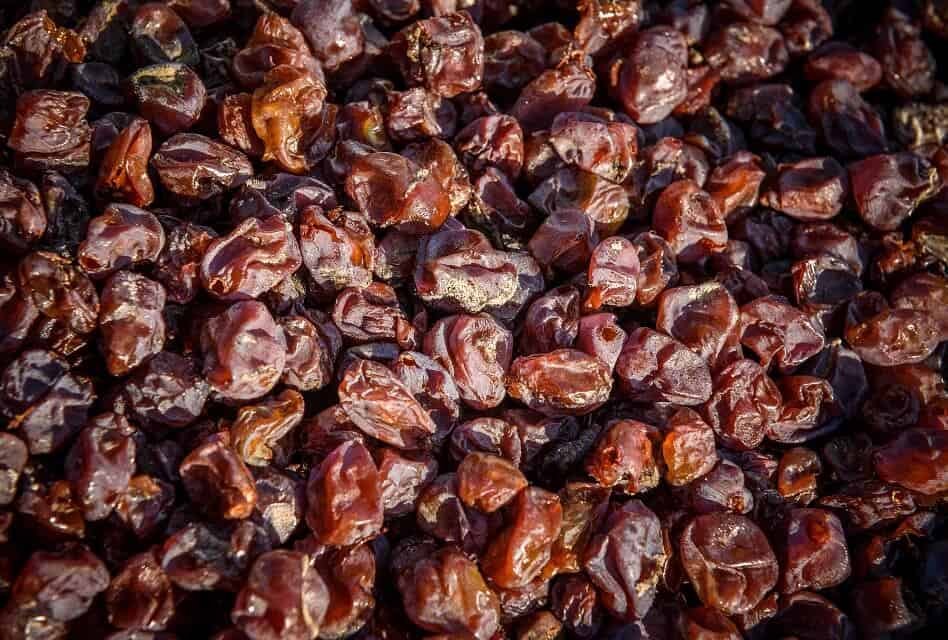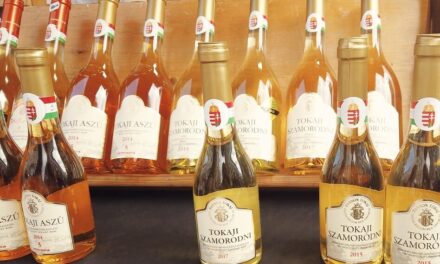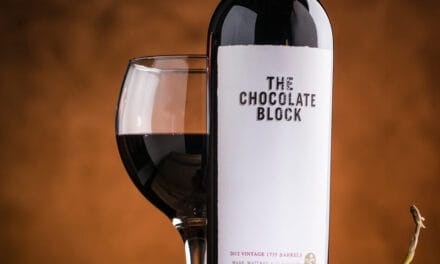Rotten food items are typically not something that you like to consume. But strangely, some of them are actually delicious. Grapes that are infected with noble rot belong in this category. They produce some of the most flavorful and complex sweet wines. But what exactly is noble rot?
Noble rot is an infestation by a fungus called Botrytis cinerea. This fungus dehydrates wine grapes and forces them to concentrate all their natural sugar in a small amount of remaining juice. When pressed, these infected grapes produce very sweet must that winemakers can process into excellent dessert wines.
Interestingly, vintners in different countries have developed techniques to produce noble rot wines independently from each other. In this article, we will discuss the legends about their uprising, the wines made in these countries, and how to enjoy them best.
WHAT DOES NOBLE ROT DO TO WINE?
Noble rot dehydrates wine grapes and consumes about 35-45% of their sugar. The remaining sugar concentrates on the little juice left inside, creating a very sweet syrup.
Besides, the fungus reduces the acidity of infected grapes by metabolizing their tartaric and malic acids. It destroys aroma components and enzymes, but at the same time, it creates new ones.
In summary, noble rot gives grapes an entirely new flavor profile. When processed, these grapes create a special type of wine with incredible sweetness and a unique taste.
WHAT CAUSES NOBLE ROT?
The Botrytis cinerea fungus is present in most vineyards throughout the whole year. It even overwinters in dead grape tissue or other organic debris. Besides, the wind may carry spores to a vineyard that hasn’t been affected before.
Noble rot typically occurs when the first grapes are ripe. It needs specific conditions:
- First, it needs moisture. A humidity of 85-95% is ideal. Especially misty nights and mornings can promote the spreading of noble rot.
- Second, the fungus needs nutrients, specifically sugar. Its thin filaments penetrate the grape skin, sink into its pulp, and extract the sugar. Due to the small holes in the skin, the grapes start losing water and drying out.
- Third, warm and dry conditions in the afternoon are necessary to stop the feeding process and support the grapes’ drying afterward. If the feeding and spreading can go on for too long, the fungus causes irreparable damage to the grapes.
Ideally, wet mornings and dry afternoons occur repeatedly for several weeks.
WHAT DOES NOBLE ROT LOOK LIKE?
When the Botrytis cinerea fungus infects a grape, it first appears as little dark dots on its skin. The more time it has to spread, the more it will cover the grape with a thin greyish dust-like coat. The grape dehydrates, shrivels, and gets a brownish color, but it doesn’t split. When finally harvested, it looks very similar to a raisin.
NOBLE ROT VS. GREY MOLD – WHAT IS THE DIFFERENCE?
Noble rot should not be confused with grey rot (also: grey mold, sour bunch rot). The same fungus causes both types, but grey mold looks more like what you would expect from a fungus. It covers the grapes in thick gray fur and causes them to burst. The destroyed grapes are very vulnerable to other molds or bacteria. They are neither consumable nor processable to wine anymore.
Grey mold occurs when vine stocks are exposed to humid conditions over a significant time. A lack of air circulation can promote grey mold as well.
As grey rot can devastate vineyards, winemakers take different measures to control it. These measures include a sufficient distance between vine stocks to guarantee air circulation, proper pruning, and the usage of fungicides.

Grape Infected with Noble Rot
WHERE AND WHEN WAS NOBLE ROT WINE INVENTED?
It is unclear where noble rot wines originated. Several stories, legends, and myths exist about them. Depending on which one you believe, they might be the outcome of a war, a crime, or an unexpected rainfall period.
The oldest story comes from the Tokaj region in Hungary and dates back to the 1620s. It says that Zsuzsanna Lorántffy, the wife of Prince György Rákóczi I. of Transylvania, decided to postpone the harvest on the family vineyard. The reason was an upcoming war: The Turkish were about to invade their lands. When the danger was averted, she found her vines shriveled and covered by a dusty coat. Unwilling to waive the yield, Lady Zsuzsanna ordered her vineyard manager László Máté Szepsi to process the grapes anyways. They were both happy to find that the result was an incredibly delicious wine. That was the birth of Tokaji aszú. Today, it’s still the region’s signature beverage and one of the most famous dessert wines worldwide.
Another legend describes the accidental invention of noble rot wine in Germany. In 1775, a messenger traveled to Castle Johannisberg in the Rheingau region. He carried the order to start the Riesling harvest by the bishop of Fulda, who owned the local vineyards. But on his way, the messenger became a victim of highwaymen. Thus, he arrived with a delay of three weeks – and during this time, Botrytis cinerea had infected the vineyard. The vintners decided to give the infected grapes to the peasants, who brewed a deliciously sweet wine from them. From this year on, late harvest (German: Spätlese) became an intentional practice.
The French also have their birth myth of noble rot wines. They believe that in 1836, a wine dealer named Focke waited until the end of the autumn rains before bringing in the harvest. Until then, noble rot had dried most of the grapes. But Focke processed them to wine anyways and started selling the sweet outcome.
WHICH WINES ARE MADE WITH NOBLE ROT?
Nowadays, winemakers in many different countries follow the practice of letting grapes rot intentionally. But as we have learned, Botrytis cinerea needs very specific weather conditions to spread. And in Old World countries, it is more likely to find these conditions than in the New World. Thus, the most famous noble rot wines come from Europe.
Here are the most important regions and the noble rot wines they produce:
- Tokaj, Hungary: Being the place where the oldest birth myth originated, the Tokaj region still is home to many great dessert wines. Tokaji (also: Tokaji Aszú) wines are made from Furmint grapes.
- Bordeaux, France: Although this region is primarily famous for its red wines, Bordeaux winemakers also produce delicious noble rot wines. For instance, they use Sémillon grapes to produce Sauternes and Barsac.
- Alsace, France: Another French region known for great sweet wines is Alsace, close to the German border. From Riesling, Gewürztraminer, and Moscato grapes, vintners make delicious “Selection des Grains Nobles” wines (English: selection of noble berries).
- Loire Valley, France: The third noteworthy type of dessert wine from France is “Quarts de Chaume”. These Grand Cru wines are made from Chenin Blanc grapes.
- Germany and Austria: Many vintners in different regions of Germany and Austria make noble rot wines. They use, in particular, Riesling grapes, but also Chardonnay, Gewürztraminer, and other varietals for this purpose. If you find the terms “Trockenbeerenauslese” (English: selected dry berry harvest) or “Edelfäule” (English: noble rot) on a bottle label, it is a noble rot wine for sure.
- California: On vineyards close to the San Francisco bay, vintners can often experience ideal conditions for noble rot. Typically, they label their wines “late harvest”.

Bottle of Tokaji Wine
In some cases, vintners use noble rot grapes to make ice wine as well. As they also use non-dried grapes, the “Ice Wine” label isn’t a reliable indicator for noble rot, though.
HOW DO NOBLE ROT WINES TASTE?
Noble rot wines are sweet with aromas of honey, ginger, apricot, caramel, brown sugar, and nuts. But they aren’t as overwhelming as other sweet dessert wines. The reason is their great balance: With their crisp acidity, they counter the sweetness. And in combination with their rich and complex bouquet of concentrated aromas, they provide a unique drinking experience.
NOBLE ROT WINE SHOPPING TIPS
Making noble rot wines is a time- and cost-intensive work, and it also is risky for several reasons:
- When the fungus dries out the grapes, only a little juice remains inside. Thus, the output of a noble rot harvest is significantly lower than a regular wine harvest.
- Vintners have to use specific labor-intensive methods such as manual picking and grape selection to process the grapes.
- The perfect conditions for the Botrytis cinerea fungus are rare. And in some years, they might not occur at all.
For all of these reasons, noble rot wines are expensive. They typically come in small bottles of 375ml or 500ml (instead of 750ml to 1 liter for table wine). So be aware of the bottle size when comparing prices.
Tokaji Wines
Tokaji wines tend to be among the most expensive sweet wines. They start at around 20 USD; better styles typically cost around 50 USD. But older vintages are much more expensive.
Besides sweet styles, you can also find dry Tokaji wines. So read bottle labels carefully before making a purchase.
Here are two affordable Tokaji wines and one high-end bottle:
Kiralyudvar Tokaji Aszu 6 Puttonyos 2008
- type: white, still, Vintage
- origin: Hungary, Tokaj
- varietal: Furmint, Hárslevelű
- alcohol: 10.0%
Royal Tokaji 5 Puttonyos (Red Label) 2016
- type: white, still, Vintage
- origin: Hungary, Tokaj
- varietal: Furmint, Hárslevelű
- alcohol: 11.5%
Royal Tokaji Late Harvest 2018
- type: white, still, Vintage
- origin: Hungary, Tokaj
- varietal: Furmint, Hárslevelű, Muscat
- alcohol: 11.5%
Sauternes Wines
For an entry-style bottle of 375ml of Sauternes, expect to pay at least 10 to 15 USD. Good wines are available from 20 to 50 USD. Old vintages can cost hundreds of dollars.
Be aware that some vintners presale their wines even before they are available in stores. So if you are eager to try the latest vintage, you might have to preorder it.
These are interesting Sauternes wines to try:
Chateau Bastor-Lamontagne Sauternes 2016
- type: white, still, Vintage
- origin: France, Bordeaux
- varietal: Sauvignon Blanc, Semillon
- alcohol: 14.0%
Chateau Guiraud Sauternes 2020
- type: white, still, Vintage
- origin: France, Bordeaux
- varietal: Sauvignon Blanc, Semillon
- alcohol: 13.5%
Chateau d'Yquem Sauternes 1999
- type: white, still, Vintage
- origin: France, Bordeaux
- varietal: Sauvignon Blanc, Semillon
- alcohol: 14.0%
Barsac Wines
Barsac wines are approximately in the same price range as Sauternes wines. Try this one:
- type: white, still, Vintage
- origin: France, Bordeaux
- varietal: Muscadelle, Sauvignon Blanc, Sémillon
- alcohol: 14.0%
Alsace Wines
For Alsace wines goes, what is valid for Tokaji wines: Double-check the label. Alsace is famous not only for dessert wines but also for still table wines and sparklers.
German & Austrian Wines
Finding noble rot wines from Germany or Austria in the United States is rather difficult. However, there are some you should try:
- type: white, still, Vintage
- origin: Austria, Burgenland
- varietal: Chardonnay, Welschriesling
- alcohol: 11.0%
Kracher Traminer TBA Nouvelle Vague No. 1
- type: red, still, Vintage
- origin: Austria, Burgenland
- varietal: Muscat Rose à Petits Grains
- alcohol: 12.5%
Dr. Loosen Riesling Beerenauslese 2017
- type: white, still, Vintage
- origin: Germany, Mosel
- varietal: Riesling
- alcohol: 7.0%
California Wines
Finding Californian noble rot wines isn’t easy either. As mentioned before, vintners typically label them as “late harvest” wines. But not all late-harvest wines are noble rot wines. So you need to do a little bit of research to find out if the late-harvest wine actually was in touch with Botrytis cinerea. These surely were:
Husch Late Harvest Gewürztraminer
- type: white, still, Vintage
- origin: United States, California
- varietal: Gewürztraminer
- alcohol: 10.0%
Bodkin Late Harvest Sauvignon Blanc 2013
- type: white, still, Vintage
- origin: United States, California
- varietal: Sauvignon Blanc
- alcohol: 13.0%
- type: white, still, Vintage
- origin: United States, California
- varietal: Sauvignon Blanc, Semillon
- alcohol: 13.5%
FINAL WORDS
After reading this article, the noble rot label hopefully does not put you off anymore. The fungus actually makes wine much better. Indeed, you are unlikely to find a similarly sweet but well-balanced experience in another wine. So why not surprise your guests with a sweet digestif when hosting the next dinner party?






